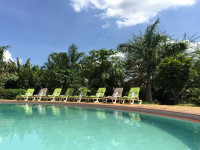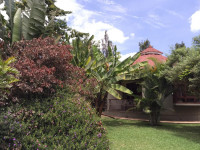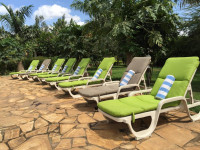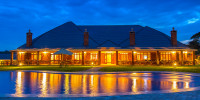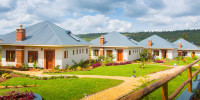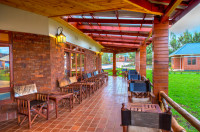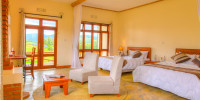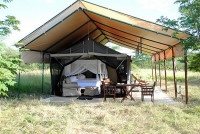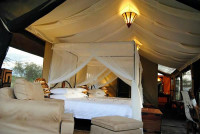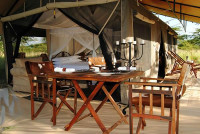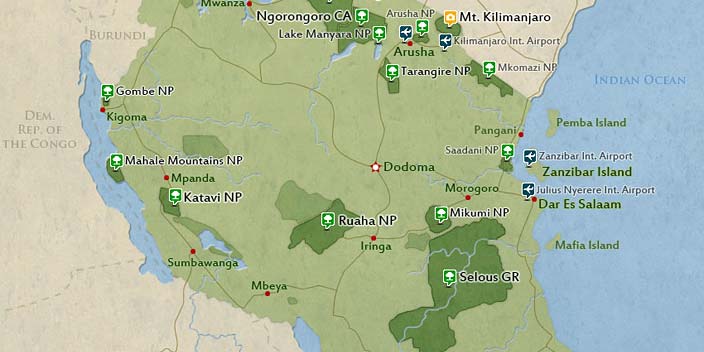
Arrival
Arrival

Day 1
Arrive Kilimanjaro or Arusha airport
Arrive Kilimanjaro or Arusha airport
Welcome to Tanzania, meet your guide for the drive to Arusha Planet Lodge where you will have Dinner and overnight. After settling into your room, take a walk around the garden or relax on the poolside. We will meet you on this day for briefing so that you can have a clear picture of what lays ahead.
- Main Destination:
- Arusha (City)
- Accommodation:
- Arusha Planet Lodge
- Meals & Drinks:

Day 2
Arusha to Tarangire National Park
Arusha to Tarangire National Park
Your guide will meet you at the hotel or the airport and give you a safari briefing. You will then drive to Tarangire National Park for some amazing game viewing. The game in this beautiful national park is plentiful and the magnificent bird watching will make a devoted birder (and even the most reluctant) appreciate them. The park is home to up to 2,500 elephants which can be seen looking for underground water in the dry riverbeds during the dry season. You will also see migratory wildebeest, zebra, buffalo, and other incredible sightings like lion, cheetah, leopard, giraffe, baboon, and waterbuck. The park’s scenery is amazing, a landscape dotted with huge baobab trees and the meandering life-giving Tarangire River. It offers excellent game viewing during the dry season (June to October) when the migratory wildebeest and zebra are around. Later in the evening proceed to your accommodation for dinner, and overnight.
- Main Destination:
- Ngorongoro Crater
- Accommodation:
- Marera Valley Lodge
- Meals & Drinks:

Day 3
Karatu -Ngorongoro Crater Tour to Serengeti National Park
Karatu -Ngorongoro Crater Tour to Serengeti National Park
After breakfast, you will drive up into the cooler regions of Ngorongoro Conservation Area. When you first see Ngorongoro Crater, it looks like a forgotten world. Concealed by the steep volcanic walls is a pristine wilderness including sweeping savannah, pockets of acacia woodland, and glistening lakes and swamps. The Crater was created when a large volcano exploded and collapsed in on itself two to three million years ago and it covers an area of 260 km². The Crater is famous for both its geological delights and for being a natural reserve that is home to some of the densest large mammal populations in the whole of the African continent. After you descend into the Crater, you quickly find yourself amongst large numbers of wildebeest, zebra, gazelle, and more than 500 bird species. The Crater provides you with the best chance of seeing the endangered black rhino. You will then transit through Ngorongoro Conservation Area, to the Serengeti, entering at the Nabi gate.
- Main Destination:
- Ngorongoro Crater
- Accommodation:
- Tanzania Bush Camps Central Serengeti
- Meals & Drinks:

Day 4
Serengeti National Park to Karatu
Serengeti National Park to Karatu
The Serengeti is truly spectacular. It is famous for its vast open grasslands which allow for excellent sightings of wildlife. The Serengeti's climate and vegetation have remained largely untouched for millions of years. Whilst it boasts abundant wildlife, it is perhaps best known for the annual Great Migration. Vast numbers of wildebeest; accompanied by large numbers of zebra and antelope move in an annual pattern, constantly seeking fresh grazing. The migration can be found during any given month; you just need to know where to look! The question should really be about the 'best places' to see the animals during a certain time of year. In addition to the iconic landscapes, you have a good chance of encountering predators and you may see lion, cheetah and leopard. It is a truly life-changing experience. In the afternoon, you will start your journey back to Karatu, hopefully enjoying more wonder on the way!
- Main Destination:
- Central Serengeti National Park
- Accommodation:
- Marera Valley Lodge
- Meals & Drinks:

Day 5
Lake Manyara National Park To Arusha
Lake Manyara National Park To Arusha
Leave the lodge after an early breakfast with a delicious picnic lunch and proceed to Lake Manyara National Park for game viewing. The park is home to the famous tree-climbing lions, elephants, giraffes, buffaloes, and big troops of baboons. More than 400 species of birds have been recorded here, and even a first-time visitor to Africa might reasonably expect to observe 50 of these in one day. Inland of the floodplain, a narrow belt of acacia woodland is the favored haunt of Manyara’s legendary tree-climbing lions and giraffes. After lunch, we leave the park and head to Arusha. Your guide will drop you off at your hotel or Kilimanjaro International Airport for your onward connection.
- Main Destination:
- Lake Manyara National Park
- Accommodation:
- No accommodation (End of tour)
- Meals & Drinks:


